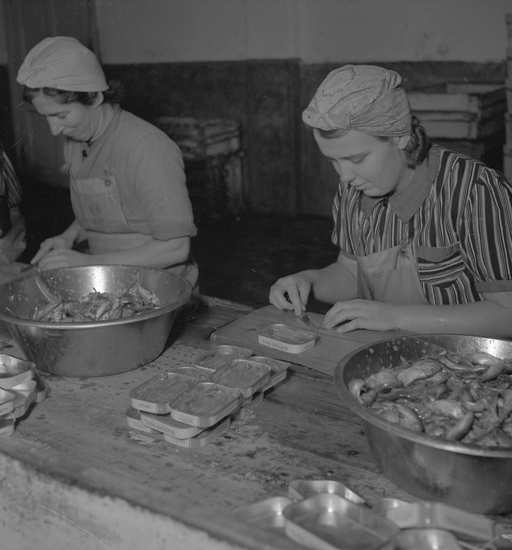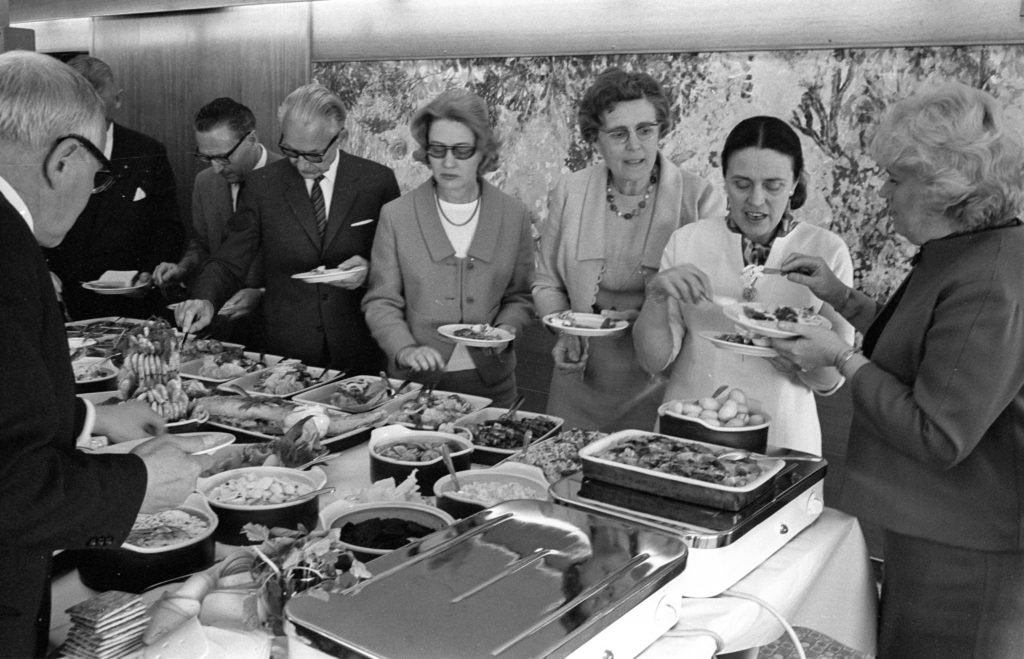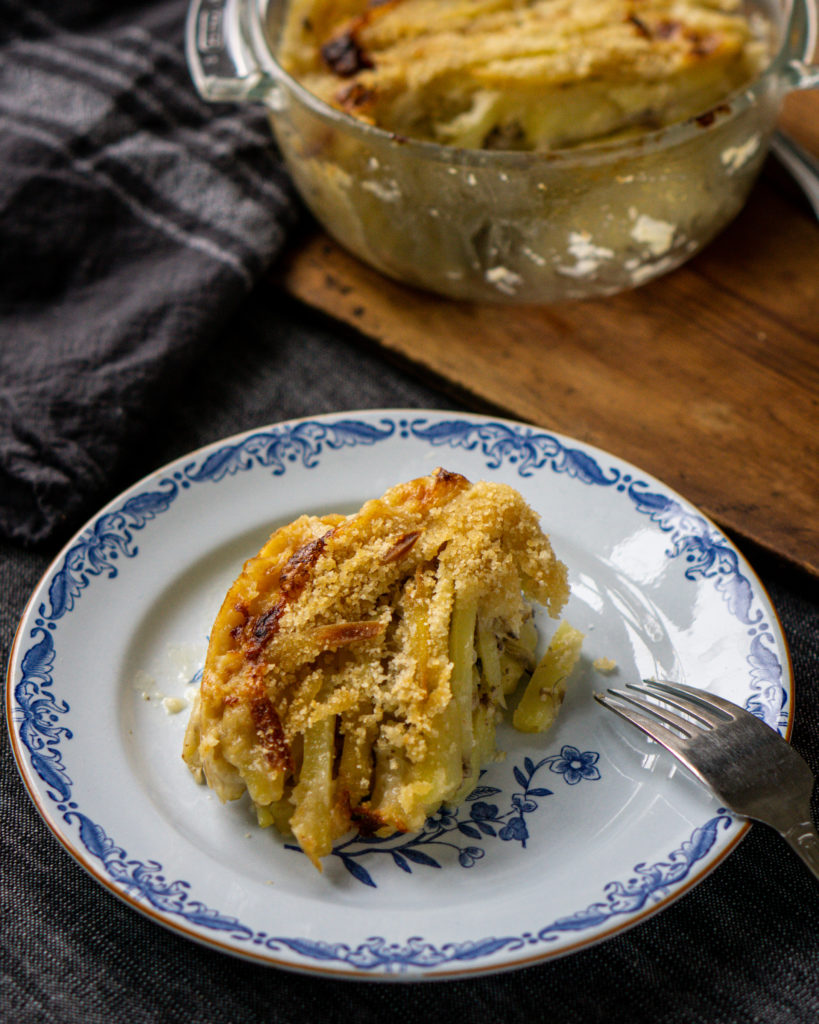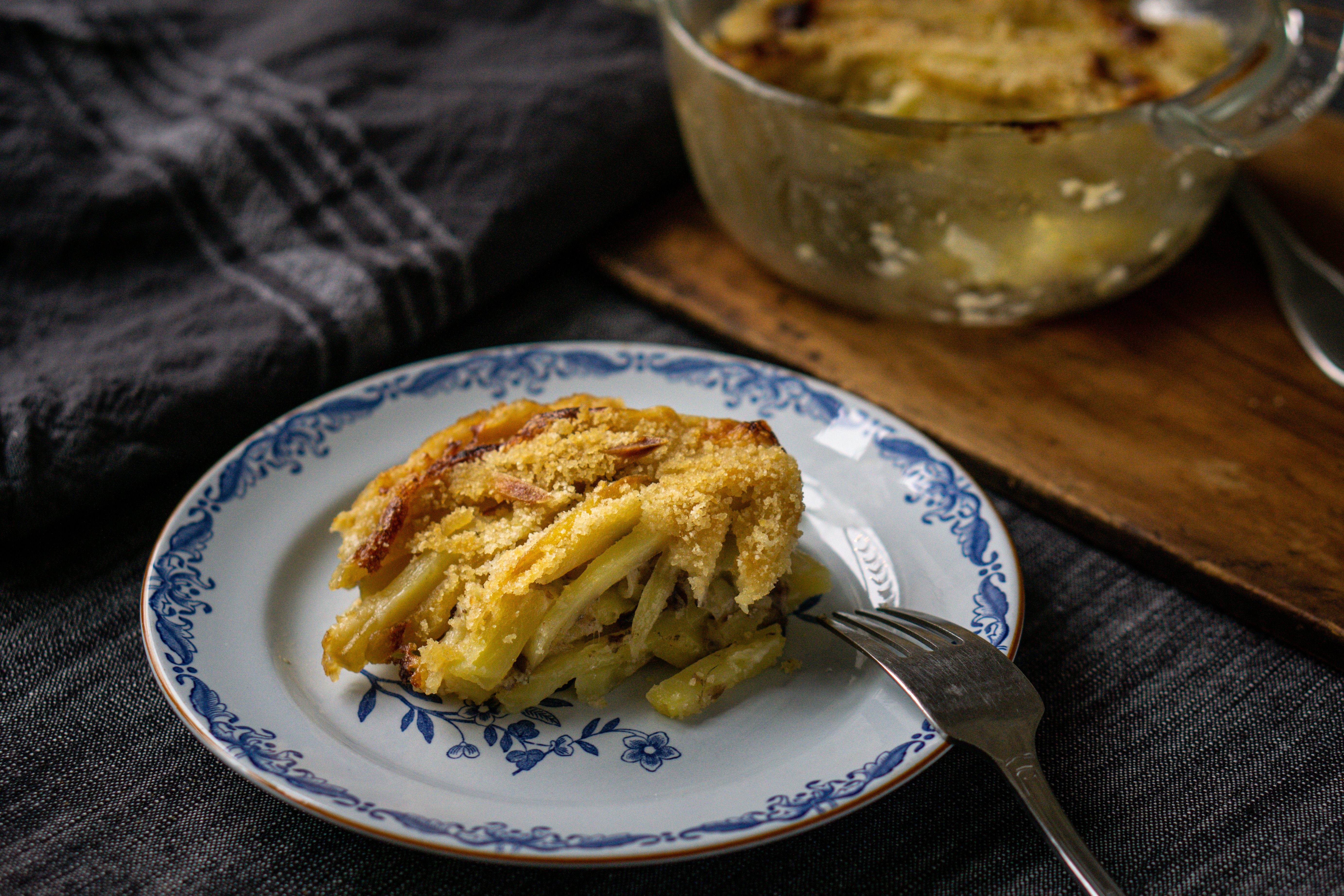It might be ironic that for many dishes bearing someone’s name, it is nowadays difficult to determine whose name it actually is. Look at biff à la Lindström, for example. And it turns out that Janssons frestelse—or Jansson’s temptation, as it is known to some—isn’t a bit better.
According to Janssons frestelse by Mats Rehnberg, published in Gastronomisk kalender 1979, several sources claim that the Jansson in question was the singer and actor Pelle Janzon.
But, according to Gunnar Stigmark in Så var det med Janssons frestelse (also in Gastronomisk kalender, but in 1989), the name didn’t become popular until several decades after Janzon’s death, there is no source on him ever eating something similar, and the name is spelled differently. Instead, Stigmark has another version of the story.
Apparently, his mother Elvira Stigmark was fond of the actor Edvin Adolphson’s movies. The movie Janssons frestelse, starring Adolphson, premiered on Boxing Day in 1928. Unfortunately, the movie got luke-warm reviews, but the name stuck with Elvira Stigmark. When she, shortly thereafter, hosted a small gathering for her lady friends, she named the sprats casserole with potato after the movie, to tell it apart from the older sprats casseroles with egg. The name caught on in her circles, and the family’s cook Sofie Pauline Brogård possibly spread the new name further.
Gunnar Stigmark’s story gets some backup from Per Erik Wahlund’s Baktankar till en frestelse in the same book. Wahlund had heard from a lady called Elsa Tholander that she had noticed that the dish started to become popular under that name already in 1932 or 1933.
Regardless of the truth behind the name of the sprats casserole, Pelle Janzon at least lent his name to a type of steak tartare-dish called biff à la Pelle Janzon. So, today’s lesson: if you’re naming a dish, name it with a first name as well as a surname…

The history of Swedish sprats casseroles
Sprats have been part of the Swedish cuisine since the 17th century, according to Jan-Öjvind Swahn. It is worth noting that what Swedes call ansjovis is sprats, (skarpsill, “sprattus sprattus”) in spiced brine, while anchovy in the rest of the world is something different.
Sprats didn’t become popular in Swedish cooking until the 19th century, according to Rehnberg. Even if Cajsa Warg has a recipe of herring casserole, where the fish is mixed with bread, the oldest similar recipe with sprats that I’ve found is from Gustafwa Björklund’s 1847 cookbook. It is a minimalist dish, where the sprats are covered in a mix of egg and cream.
In Anna-Maria Zetterstrand’s 1863 cookbook, the sprats casserole is covered in a mix of egg, cream, and butter over the fish, with breadcrumbs sprinkled on top.

When Mathilda Langlet in 1884 recommends warm smörgåsbord dishes, she highlights casseroles. You put whatever you have on hand—smoked pork, boiled fish, or why not sprats—in an oven-proof dish, add chopped fried onion, some melted butter, and a mix of egg and milk.
In Iduns Hjälpreda from 1899, there’s a recipe for potato casserole that mixes boiled, sliced potato with sprats and sliced hardboiled eggs, topped with an egg and milk mixture.
So, while the older casseroles seem to have consisted of sprats in egg and milk or cream, potatoes have become increasingly important—so much that there’s no egg in the dish nowadays.

How to make a light and creamy Janssons frestelse
My mother’s trick is to dry out the potato in the oven before she adds the liquids and cooks it until done. The result is a lighter Jansson which is just as creamy as the decidedly heavier standard recipe. So, you can have two portions… This recipe is suitable for two people as a light meal, so feel free to double it.
400 gr firm potatoes
1 small jar sprats with brine (55 gr)
0,5 onion
1,5 dl (0,6 cups) milk
0,5 dl (0,2 cups) cream
salt, pepper
about 2 tbsp breadcrumbs
For frying: butter or oil
- Turn the oven on 200°C (390°F).
- Peel the potato and cut it into slivers.
- Chop the onion finely and fry it in butter until soft and translucent.
- Half the sprats filets length-wise—keep the brine in the jar.
- Grease a small oven-proof dish. Place a layer of potato in the bottom and then layer onion, sprats, and potato.
- Place the dish in the oven for 20-25 minutes until the potato starts to dry out.
- Mix milk, cream, some brine from the sprats, salt, and pepper into a saucepan and heat it slightly. Don’t let it boil—it just needs to be warm.
- Take out the potato dish and pour over the milk mixture. Cover the top with breadcrumbs.
- Place the dish back in the oven and leave it until it has a golden surface and the potato has softened, for about 25 minutes. If the surface is getting ready but the potato needs more time, cover the dish in aluminum foil or put on a lid.
Suggestions
Of course, you can go for the more classic recipe and just use cream and skip the “drying out-stage”, but you won’t miss the cream in the recipe above. Nice and creamy!
Feel free to experiment with the ratio of onion and sprats to potato, depending on your preferences and what size of jar you can find.



Very interesting Swedish cuisine history, plus a helpful recipe — thanks!
Thank you James, glad you enjoyed it!